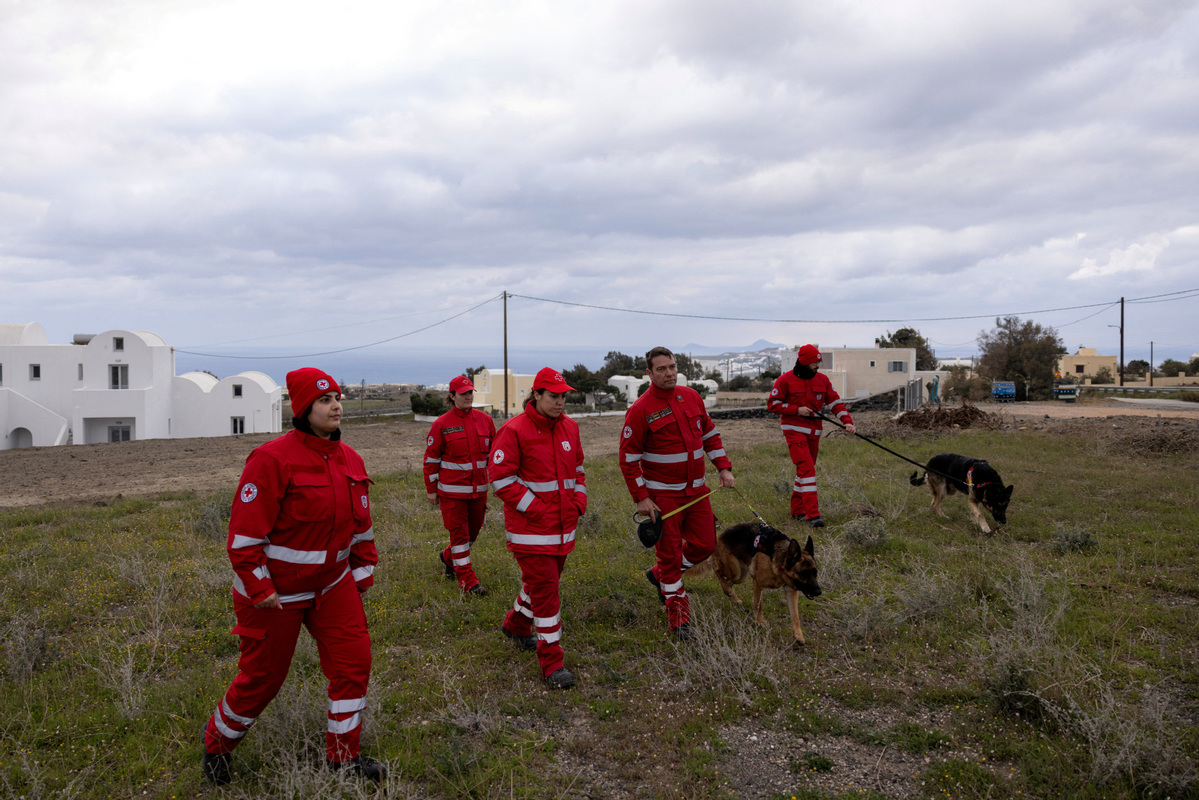
Red Cross rescuers with rescue dogs map the area, as the increased seismic activity continues on the island of Santorini, Greece, February 8, 2025. [Photo/Agencies]
Concern is growing over a series of repeated tremors that have been taking place near the volcanic Greek island of Santorini.
Other nearby islands in the Aegean Sea have also been affected during the last few weeks but as the earthquakes have become stronger and more perceptible, it is Santorini that has become the focus of attention.
The strongest tremor so far, with a magnitude of 5.1, was on Feb 6 and was felt in the Greek capital Athens and also in parts of Turkiye more than 240 kilometers away.
The main focus of the seismic activity is close to a small uninhabited island around 30 kilometers northeast of Santorini itself, but as a precaution, more than 10,000 residents and visitors have left Santorini since the central government declared a state of emergency there last week.
Schools have been closed, and all swimming pools have been drained because of fears of water movement causing the destabilization of buildings.
"We are not yet in a position to say that we are seeing any evidence that would lead to the sequence slowly coming to a conclusion," Vassilis K Karastathis, a seismologist and director of research at National Observatory of Athens, told Sky News. "We are still in the middle of the road, we haven't seen any easing, any sign that it's heading towards a regression."
The crescent-shaped island of Santorini is a hugely popular tourist destination, famed for its whitewashed villages built on dramatic cliffs. The landscape was formed following a major volcanic eruption more than 3,500 years ago, but the cliffs put residents at risk from incidents such as rock slides.
The region has a long history of seismic activity, with the most serious earthquake in recent times being in July 1956, when a 7.8 magnitude tremor, and subsequent aftershock, left 53 people dead.
It is unclear whether the current quakes are foreshocks – minor tremors ahead of something more serious – or part of a so-called swarm of smaller-scale incidents that could last indefinitely, which makes it harder to anticipate what might happen next, or when it might happen.
"There is no serious technology or approach to be able to predict what will happen from here on," said Costas Papazachos, a professor of applied geophysics and seismology at the University of Thessaloniki.
Last week, Greece's Prime Minister Kyriakos Mitsotakis, who had previously called the situation an "extremely complex and intricate geological phenomenon", visited Santorini to inspect precautionary measures being taken, and to announce a support package of 3 million euros ($3.1 million) to plan emergency evacuation routes.
"We are preparing for the worst while hoping for the best. That's what a serious and organized state must do," he said.
julian@mail.chinadailyuk.com